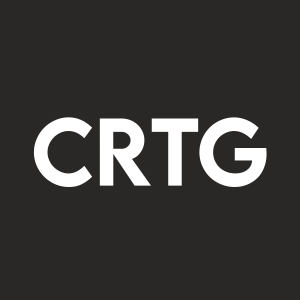The Coretec Group Provides an Update on its CSpace Technology Partnership with The University of Adelaide
The Coretec Group (OTCQB: CRTG) announced progress in its partnership with The University of Adelaide to develop advanced glass materials for its CSpace 3D volumetric display technology. The research team is exploring four low-phonon energy glasses, with early results showing promise, particularly with heavy metal oxide glass being brighter than conventional materials.
Future plans include scaling up the imaging chamber size and improving the quality of 3D images. CEO Matt Kappers highlighted the steady advancements in CSpace technology alongside ongoing battery development.
- Early results show a specific heavy metal oxide glass is brighter than ZBLAN fluoride glass, potentially improving CSpace technology.
- The University of Adelaide is actively involved in developing scalable manufacturing solutions for optical materials.
- The previous materials used, NaYF4 single crystal and ZBLAN fluoride glass, proved difficult to produce in commercially useful sizes.
- The imaging quality challenges suggest ongoing development is necessary before achieving market-ready products.
For background, Coretec’s CSpace technology controls two invisible infrared lasers to generate visible, 3D image pixels in an imaging chamber. The imaging chamber relies on rare earth ions that are dispersed within the chamber material to create visible pixels at the locations where the two lasers intersect. 3D images are created by scanning the two lasers across the imaging chamber material.
Coretec has previously examined the use of low-phonon energy NaYF4 single crystal, and ZBLAN fluoride glass as the imaging chamber material. The challenge in creating high quality imaging is both materials are difficult to produce at a sufficient quality and size, certainly not enough to be considered commercially useful.
Currently, the University is examining four types of alternative low-phonon energy glasses that hold potential for large-scale manufacturing with high optical quality. As a first proof-of-concept step, they have fabricated four small-scale (1-inch) glasses, doped with the same amount of the rare earth ion Er3+ which can generate green image pixels using a dual-infrared laser system. According to preliminary results, a specific type of heavy metal oxide glass is brighter than the reference ZBLAN fluoride glass under the pulsed dual-infrared laser system at
“We are delighted by the results of our work with Coretec’s CSpace technology thus far,” said Dr. Yunle Wei, a glass scientist at the
“This 3D volumetric display research is exciting as it brings new material innovations, dual-laser excitation and control in materials, and scaling-up manufacturing approach for enabling practical technology,” said Professor
The University’s next steps, led by Professor Heike Ebendorff-Heidepriem, will be to examine the brightness of the fabricated four small-scale glasses under Coretec’s dual-infrared laser system and then begin fabricating a medium-scale (2-inch) heavy metal oxide glass image chamber. Developments even further beyond those could include a 10-inch glass chamber, along with multi-color imaging chambers.
“Our 3D volumetric displays require the best possible imaging chamber, and the team at the
About the
About
For more information, please visit thecoretecgroup.com.
Follow
Twitter – @CoretecGroupInc
LinkedIn – www.linkedin.com/company/24789881
YouTube – www.youtube.com/channel/UC1IA9C6PoPd1G4M7B9QiZPQ/featured
Forward-Looking Statements
The statements in this press release that relate to The Coretec Group’s expectations with regard to the future impact on the Company’s results from operations are forward-looking statements and may involve risks and uncertainties, some of which are beyond our control. Such risks and uncertainties are described in greater detail in our filings with the
View source version on businesswire.com: https://www.businesswire.com/news/home/20220907005361/en/
Corporate Contact:
info@thecoretecgroup.com
+1 (866) 916-0833
Media Contact:
FischTank PR
coretec@fischtankpr.com
+1 (518) 669-6818
Source:
FAQ
What is the latest update from The Coretec Group regarding the CSpace technology?
Which glasses are being tested for the CSpace imaging chamber?
What challenges did The Coretec Group face with previous glass materials?
What are the next steps for The Coretec Group in their partnership with The University of Adelaide?







